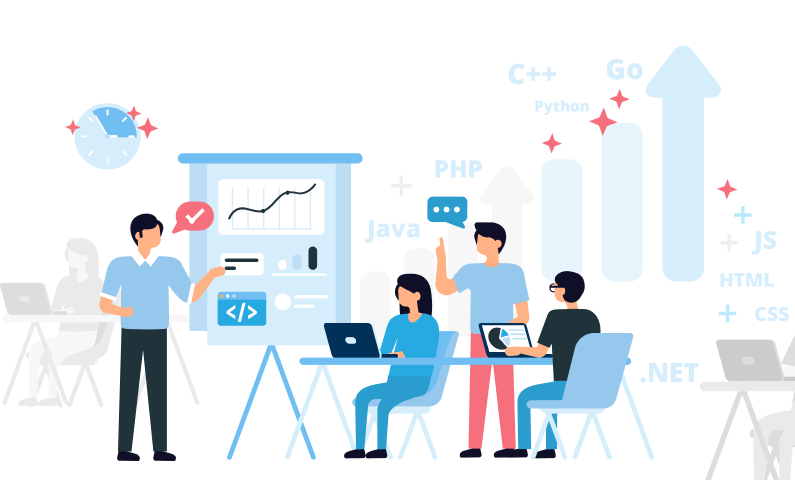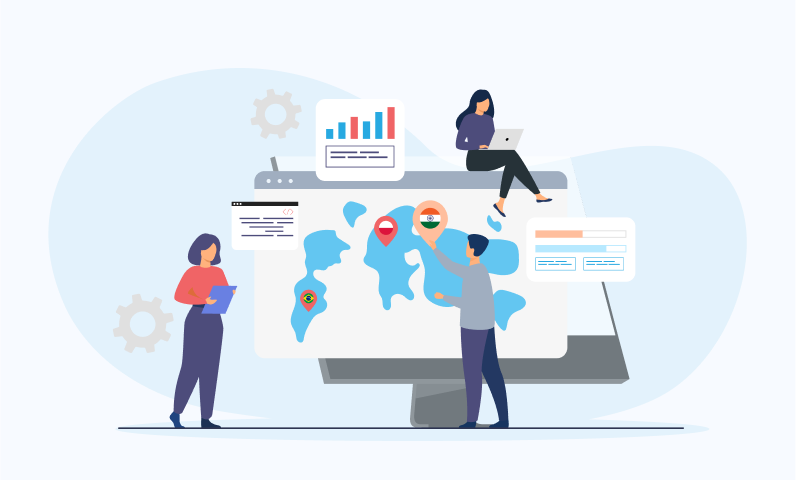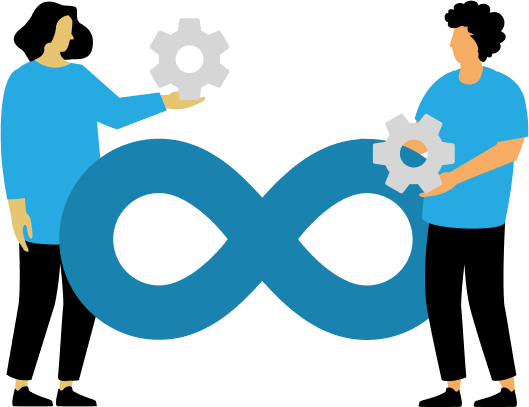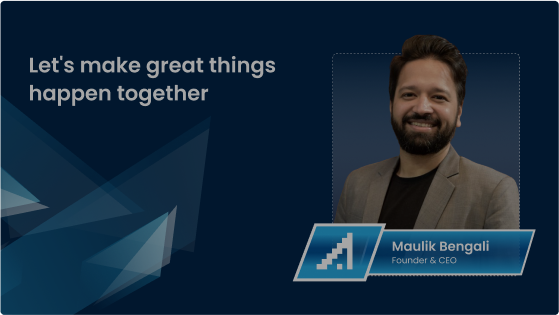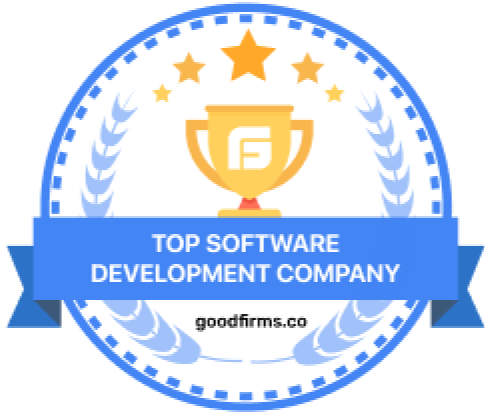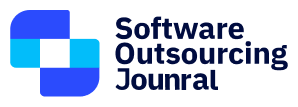Legacy systems, though reliable in the past, can become a hindrance to your business’s growth, exposing it to security vulnerabilities and making it difficult to stay competitive. Recognizing when to upgrade these outdated systems is crucial for maintaining efficiency and ensuring compatibility with new technologies.
Legacy application modernization involves updating old software, programming languages, and processes to align with current technological standards. This can lead to improved efficiency and better integration with modern systems.
In this article, we will explore the importance of modernizing legacy systems and offer a step-by-step guide to help you effectively navigate this transformation.
What is Legacy System Software?
A legacy system refers to a platform, application, or technology that was once state-of-the-art but has since become outdated. This can occur because it has been superseded by newer iterations or because it requires substantial effort to remain compatible with modern systems.
Software developers might not have a strict definition for legacy software, but anything over 20 years old is generally seen as outdated and ripe for modernization. Also, when the costs of maintaining such software become exorbitant, it indicates that the software is no longer advantageous for the business.
So, what does “legacy” mean in the context of software?
The term “legacy” is subjective and depends on the specific business objectives and the state of technology at the time the system was implemented. If a system can no longer support the evolving requirements of the business, it is considered outdated or legacy.
Why Are Legacy Systems Still Used?
Legacy systems remain in use due to several factors, including the high costs and complexities involved in replacing them, and their critical role in business operations. Customizations tailored to specific business needs and a lack of in-house expertise to manage upgrades also contribute to the reluctance to modernize.
Maintaining compliance often means sticking with established systems in industries with strict regulations, such as banking and healthcare. Additional reasons include interoperability challenges, a risk-averse culture, and the perceived stability of existing systems. Moreover, long life cycles, gradual modernization efforts, and fears of disrupting integrated ecosystems further influence the decision to continue using legacy systems.
However, the trend is shifting as more businesses recognize the benefits of legacy application modernization.
According to Avanade’s research, senior IT decision-makers believe that replacing legacy code can boost annual revenue by over 14% while reducing operating costs by 13%. Additionally, 88% of C-level executives consider IT system modernization crucial for meeting new digital business requirements. Despite this, 87% of IT executives feel that their companies’ leaders don’t fully appreciate the potential ROI of modernization, leading to significant resistance and hindering business continuity. Alarmingly, nearly 50% of organizations admit that most of their applications still run on on-premises legacy systems.
8 Technology Trends Critical for Legacy Application Modernization
Modernizing legacy applications allows organizations to take advantage of some of today’s most significant enterprise technologies. Here are eight critical technology trends that play a vital role in legacy application modernization:
1. Cloud Applications
Cloud technology makes it easier for teams to share data across various tools, applications, and locations. Organizations can scale operations, manage costs more efficiently, and remain agile as customer needs evolve. The cloud offers flexibility and scalability essential for modern businesses to thrive in a competitive market.
2. Containers
Containers are pivotal for deploying and operating software in the cloud. They simplify the management of applications as they transition between different environments. They provide a standardized software unit, making modern application operations more accessible, efficient, and secure. Containers help ensure consistency, regardless of where applications are deployed.
3. Microservices
Modern applications increasingly rely on microservices architecture, dividing functionalities into small, independent services linked by APIs. This approach allows organizations to choose the best solutions for specific needs, connecting them to create a unique, tailored system. Microservices enhance flexibility, making updating or replacing individual components easier without disrupting the entire application.
4. Automation
Automation plays a crucial role in streamlining workflows and enhancing productivity. By automating repetitive and mundane tasks, teams can focus on more strategic and fulfilling work. Automation tools can handle a variety of processes, from code deployment to quality assurance, ensuring that operations run smoothly and efficiently.
5. DevOps
Among technology trends, DevOps wins the bet as a collaborative approach that integrates development and operations teams. It improves operational efficiency and responsiveness to changing customer demands. DevOps practices use analytics, monitoring, and metrics to make informed legacy application modernization decisions. This approach fosters a culture of continuous improvement and helps bridge the gap between software development and IT operations.
6. APIs
Application Programming Interfaces (APIs) enable information sharing between different applications, facilitating integration and data flow across platforms. APIs are essential for creating interconnected cloud-based systems and ensuring that previously isolated microservices can function cohesively. They enable seamless communication and interoperability between diverse software components.
7. Digital Adoption Platforms
Digital adoption platforms provide overlays on applications to offer direction, support, and guidance. These platforms help users better understand and utilize the software they work with, improving adoption rates and reducing frustration associated with technical changes. Digital adoption platforms enhance user experience and productivity by offering contextual information and real-time assistance.
8. Data Warehouses
Modern data warehouses are designed to store, protect, and organize the vast amounts of data generated by contemporary applications. As new applications create and utilize more data, having a robust data warehouse ensures that this data is readily available and secure. Data warehouses support advanced analytics and reporting, helping organizations make data-driven decisions while safeguarding sensitive information.
By leveraging these eight critical technology trends, organizations can successfully modernize their legacy applications, enhancing efficiency, scalability, and security while staying competitive.
Modernizing Legacy in Three-Step
Here’s our three-step evaluation process that provides a structured approach to navigating legacy application modernization based on specific needs and challenges.
STEP 1: Assess Legacy Systems Using Six Drivers
Legacy applications often pose challenges due to their technology, architecture, or functionality. Gartner identifies six critical drivers for application modernization:
Business Perspective
- Business Fit: Ensure alignment with current business requirements.
- Business Value: Enhance value delivery through modernization.
- Agility: Improve responsiveness to digital business demands.
IT Perspective
- Cost: Reduce the total cost of ownership.
- Complexity: Simplify technology infrastructure.
- Risk: Address security, compliance, and scalability issues.
Projects offering multiple drivers from both perspectives present the best modernization opportunities.
STEP 2: Evaluate Modernization Options
We categorize legacy application modernization into seven options ranked by implementation ease:
- Encapsulate: Expose application features as services via APIs.
- Rehost: Move application components to new infrastructure without code changes.
- Replatform: Migrate to a new runtime platform with minimal code modifications.
- Refactor: Optimize code structure to improve performance and maintainability.
- Rearchitect: Redesign application architecture to leverage new capabilities.
- Rebuild: Rewrite application components while preserving functionality.
- Replace: Substitute the application with new solutions meeting current needs.
STEP 3: Select the Optimal Modernization Approach
Choose the modernization strategy that maximizes the organization’s value and effectiveness. Evaluate each option based on its impact on technology, architecture, functionality, cost, and risk.
For legacy applications, decisions often involve choosing between rearchitecting, rebuilding, or replacing. Rearchitecting balances cost and risk, while rebuilding or replacing offers superior outcomes with higher investment and risk. The goal is to select the approach that achieves the desired results with minimal effort and maximum positive impact.
Overcoming Legacy Application Modernization Challenges
While legacy software reflects a company’s historical growth, the issues it brings can no longer be ignored. Effective strategies to address legacy system challenges require careful planning. Here are some solutions to consider:
1. Legacy Modernization
Modernization aims to upgrade and improve legacy systems by incorporating the latest technologies. Typically handled by outsourcing or outstaffing providers, this process involves integrating new protocols, technologies, and features into outdated software.
Advantages:
- Maintains essential functions that the organization depends on, avoiding the need for complete redevelopment.
- Likely to cause fewer disruptions to workflows compared to starting development from scratch.
- Converts the system into a more flexible, adaptable, and scalable model, facilitating future growth.
Disadvantages:
- It can be costly and labor-intensive, requiring significant investment.
- It may not resolve fundamental issues if the underlying architecture is outdated or flawed.
2. Data Migration
Data migration is a critical aspect of modernizing legacy software, involving the transition from old systems to newer technologies. This ensures smooth and successful data transfer from legacy to modern workflows. Key steps include:
Data Transfer:
Moves all essential data from the old system to the new one, ensuring no damage or loss during the transition.
Period of Overlap:
Operate both old and new systems concurrently for a set period. This allows time to resolve issues and ensures the new system doesn’t disrupt business operations.
Employee Training:
Comprehensive training is crucial for smooth company-wide adaptation. Teams need to be well-versed in the new system.
3. Integration with Modern Systems
Instead of completely discarding legacy application modernization, integration aims to harmonize them with new solutions using middleware or custom APIs:
Middleware:
Acts as a bridge between old and new systems, enabling them to communicate and work together seamlessly.
Custom APIs:
Facilitate interaction between different software platforms, allowing companies to retain important legacy functions while benefiting from new features.
4. Gradual Retirement
For organizations not ready to completely abandon their old systems, gradual retirement offers a less abrupt transition. This approach phases out legacy software slowly as the new system gradually takes over its functions.
Advantages:
Minimizes operational disruptions and gives the organization ample time to adjust to the new system.
By considering these solutions, companies can effectively address the challenges of legacy application modernization, ensuring smooth transitions and enhanced system functionality.
Benefits of Modernizing Legacy Systems
Upgrading legacy systems might seem overwhelming, but the advantages surpass the initial challenges. Here, we explore five key benefits of modernizing legacy systems:
Enhanced Performance and Reliability
Modern systems leverage the latest technologies, making them well-equipped to meet current business demands. They are less prone to regular breakdowns, ensuring critical business processes run smoothly and efficiently.
Improved Security Measures
Modernized systems have advanced security features to protect your business from evolving threats. Cloud migrations allow for more regular and less disruptive updates, ensuring your system remains secure without hampering workflow.
Cost Savings and Efficiency Gains
While the initial investment in legacy application modernization may seem high, long-term cost savings typically offset it. Modern systems are more efficient in resource usage, including power and IT staff time, and they help prevent costly security breaches.
Scalability and Flexibility
Modern systems can easily scale with your business. Whether you’re experiencing rapid growth or need additional functionalities, these systems provide the flexibility to meet your evolving needs.
Compliance and Regulatory Adherence
Staying compliant with new regulations is crucial for any business. Modern systems are designed to adapt to regulatory changes, ensuring your business complies with current laws and standards.
AI Contracting Software Modernization
AI Contracting Software Modernization exemplifies a key benefit of Legacy application modernization by demonstrating how outdated systems can be revitalized to meet contemporary demands. For instance, an international legal firm can upgrade its AI contracting software and align with evolving standards in contract processing. This initiative can enhance precision and compliance in contract analysis and streamline integration with existing legal and document management systems.
The result can be substantially reduced contract review times, improved analysis accuracy, and significant operational cost savings. This showcases the transformative impact of legacy application modernization efforts on business efficiency and competitiveness.
Legacy ERP System Modernization
This benefit illustrates the transformative power of updating outdated enterprise resource planning (ERP) systems. For instance, oilfield service companies face challenges with obsolete technology and complex processes due to legacy coding practices. By modernizing their ERP system, they can revamp the technology stack for enhanced reliability and security, redesign the user interface to streamline workflows and implement cloud services for scalability and cost-effectiveness.
The outcome can include fewer system failures, improved performance, and optimized operational efficiency. This demonstrates the substantial benefits of legacy application modernization in overcoming legacy system limitations.
Conclusion: Modernize Legacy System Now!
Legacy application modernization represents a strategic investment in your business’s future. By recognizing the limitations of outdated systems and embracing the benefits of upgrading, you can initiate a transformation towards a more efficient, secure, and competitive IT environment.
While modernization efforts may come with challenges, the potential rewards justify the investment. Your business deserves an IT infrastructure that supports growth and innovation, moving beyond outdated technologies that hinder progress.
Consider your current system’s functionality and ongoing maintenance costs to determine its value. Whether you opt for full-scale modernization or incremental upgrades across various sectors like hospitality and logistics, our expertise is poised to facilitate your journey towards success.
Want to modernize your legacy system software? Let’s talk about it.

Start a Project with Ajackus




































